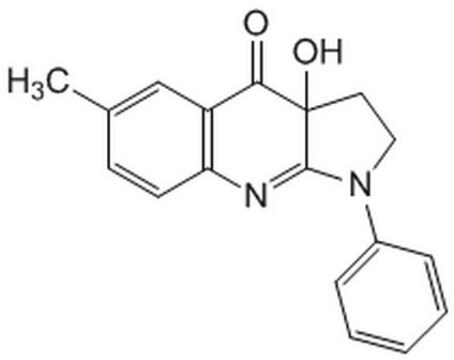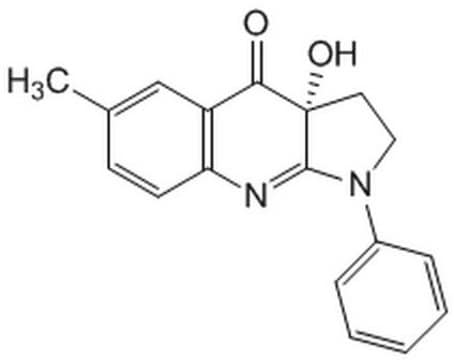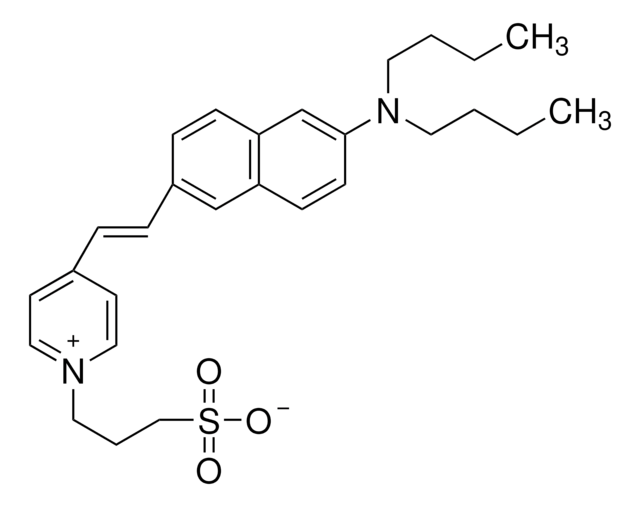B0560
(−)-Blebbistatin
≥98% (HPLC), solid, cell cycle inhibitor
Synonym(s):
1-Phenyl-1,2,3,4-tetrahydro-4-hydroxypyrrolo[2.3-b]-7-methylquinolin-4-one
About This Item
Recommended Products
Product Name
(−)-Blebbistatin, solid, synthetic
Quality Level
form
solid
solubility
DMSO: 5 mg/mL
chloroform: soluble(lit.)
ethyl acetate: soluble(lit.)
methanol: soluble(lit.)
methylene chloride: soluble(lit.)
storage temp.
−20°C
SMILES string
Cc1ccc2N=C3N(CC[C@@]3(O)C(=O)c2c1)c4ccccc4
InChI
1S/C18H16N2O2/c1-12-7-8-15-14(11-12)16(21)18(22)9-10-20(17(18)19-15)13-5-3-2-4-6-13/h2-8,11,22H,9-10H2,1H3/t18-/m1/s1
InChI key
LZAXPYOBKSJSEX-GOSISDBHSA-N
General description
Application
Biochem/physiol Actions
Features and Benefits
Storage Class
11 - Combustible Solids
wgk_germany
WGK 3
ppe
dust mask type N95 (US), Eyeshields, Faceshields, Gloves
Choose from one of the most recent versions:
Certificates of Analysis (COA)
Don't see the Right Version?
If you require a particular version, you can look up a specific certificate by the Lot or Batch number.
Already Own This Product?
Find documentation for the products that you have recently purchased in the Document Library.
Customers Also Viewed
Articles
Apoptosis regulation involves multiple pathways and molecules for cellular homeostasis.
Cell cycle phases (G1, S, G2, M) regulate cell growth, DNA replication, and division in proliferating cells.
Our team of scientists has experience in all areas of research including Life Science, Material Science, Chemical Synthesis, Chromatography, Analytical and many others.
Contact Technical Service















